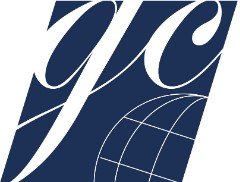Escalating conflict in Cameroon: On the verge of civil war
The current conflict in Cameroon can be traced back to the country’s history under colonial rule. While Cameroon was colonized by Germany in 1884, the French and English troops took over the state in 1916. Three years later, in 1919, Cameroon was divided into two distinct sections, with 20 per cent of the land falling under English rule and 80 per cent of the land under French rule. With a French-run government, Cameroon gained independence in 1960. However, the country remained starkly divided along linguistic lines. Today, the Anglophone population remains concentrated in the two western-most regions of the country, while the population in the rest of the country is primarily Francophone.
Disenfranchised Anglophone populations in Cameroon’s western regions claim that the long-standing Francophone government led by President Paul Biya does not distribute state resources equitably, and has negatively impacted public goods, such as legal institutions and education systems, in Anglophone communities. In October 2017, Anglophone residents protested their marginalization, to which the military responded by violently dissolving the protests, which only fueled support for an emerging separatist movement. The Anglophone separatists’ movement advocates for the independence of the Anglophone provinces of Cameroon and the formation of a new state called Ambazonia.
One year after the conflict began, separatist militias, including the Red Dragons, Tigers, and the Ambazonia Defence Forces, have gained traction and are estimated to have up to 2,000 active fighters. The violence between Anglophone separatists and the state security forces has rendered large portions of the Anglophone regions of Cameroon uninhabitable; as both groups have been condemned for human rights abuses by international organizations. The escalating conflict between the state security forces and separatist forces has resulted in 400 civilian deaths to date. In addition, the violence has left villages in the Anglophone regions deserted, as an estimated 26,000 refugees have fled to Nigeria, while an additional 160,000 residents are internally displaced within Cameroon.
The current situation in Cameroon is reminiscent of the beginning of the Rohingya genocide in Myanmar in 2017. In both cases, minority populations began protesting the regime, to which state militaries responded with lethal force. The state-driven violence against the Rohingya resulted in an estimated 9,000 deaths, 288 villages destroyed, and 687,000 refugees fleeing the country between August 2017 and August 2018. With the international community still trying to comprehend the impact of the Rohingya crisis and the consequent human rights violations that occurred, the escalating conflict in Cameroon should concern members of the international community since the situation may devolve into genocide or civil war, as we have seen before.

